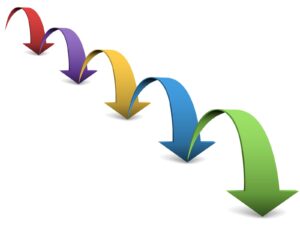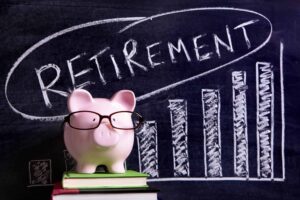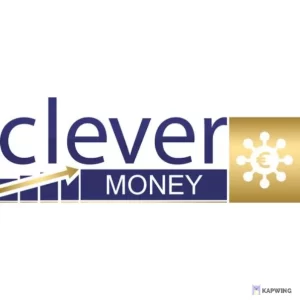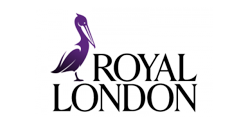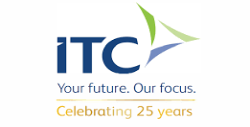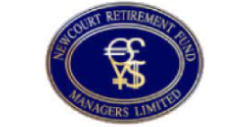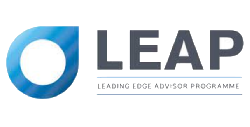
As You Finalise your Retirement Plan, CAN You Handle a Market Downturn?
You know what they say about what goes up. Well, if you’re nervous about what comes next with today’s precipitously climbing stock market, this acronym – C.A.N. – could help calm your fears.

It doesn’t take a lot of grit to handle an uptick in the market. You just watch your portfolio grow and enjoy the ride.
But a market downturn is a different story – especially when you’re nearing or already in retirement. As you watch your Retirement Plans slip away, anxiety takes hold and the walls of your comfort zone begin to close in on you.
That’s why I think it’s important for retirees and near retirees to understand the emotions that can come into play in a down market and to think through how they want to position their portfolios long before that downturn happens.
I refer to this as determining what someone C.A.N. handle, with those letters standing for:
- Capacity
- Attitude
- Need
Let’s break it down and I’ll explain what I mean.
Capacity: How much risk can you withstand, objectively?
Many financial and brokerage firms try to pigeonhole investors, categorizing them as conservative, moderate or aggressive, and then developing their portfolios based on which group they fall under. Fair enough, except those terms can mean different things to different people, and your definition may not align with the financial industry’s definition.
If you’re an aggressive investor, to reach your financial goals you may be comfortable with a market loss as much as 50% at any given year, which is likely what many experienced through the 2008 recession. Moderate investors may be comfortable with a loss of less than 50%, and for conservative investors the percentage could be even less.
So, if someone asks you about your capacity for withstanding loss, it’s important to understand how they categorize conservative, moderate and aggressive investing. And remember, with risk capacity they are talking more about how much risk you need to take to reach certain financial goals, not necessarily what that risk might do to you emotionally.
Do you know your Retirement number? Follow this link!
Attitude: How do you feel about risk? What’s your comfort level?
Set aside for the moment how the financial industry sees risk. What is your personal attitude about it? What percentage loss could you suffer in the next 12 months without shifting into panic mode? Usually, I find that most people give me percentage numbers much lower than what’s generally considered aggressive, moderate and conservative by the financial industry.
Why is that? No one has taken them through the process of assessing their attitude. Instead, everyone focuses on the potential return on investment while ignoring or downplaying the downside risk. But it’s critical to manage downside risk, because this is something that can ruin your retirement.
To explain what I mean, let’s suppose someone is five years out from retirement. They might look back at 2008 and think, “Well, that was tough, but I made it through.” But that was 13 years ago, so there was time to recover before their planned retirement. It’s a different situation entirely when retirement is approaching, because you soon will be making withdrawals from your retirement accounts to pay for your day-to-day living.
If the market falls dramatically while at the same time you are making withdrawals, your balance will begin dropping precipitously and recovery will be unlikely. But if you understand your personal attitude about weathering loss, you can build an investment portfolio that will reduce the volatility and should be able to produce results that help you avoid drifting into that panic mode when times turn tough.
At my firm, to help determine someone’s attitude about risk, we use a software program called Riskalyze. It’s based on behavioural psychology and how people make choices between random outcomes versus certain outcomes. I’ve found it to be accurate in helping people figure out who they are.

Need: How much risk do you really need to take with your Retirement Plans?
As you develop an income plan for retirement, it’s important to determine what rate of return you need to have a successful, confident and happy retirement. The answer may not be as much as you initially think. For many people, a 3% to 5% return that supplements their Social Security, pension or other sources of income may be sufficient. In other words, most retirees don’t need to invest aggressively, chasing large returns while placing their retirement at risk.
A question I like to ask retirees is this: If you could double the value of your retirement assets, would that change your lifestyle? Most people answer no, because they have developed a lifestyle in their latter years that they are comfortable with. Then I ask a second question. If you lost half the value of your retirement assets, would that change your lifestyle? The answer to that is an emphatic yes. This is why I spend a lot of time discussing downsides. A big market drop has much more impact for retirees than a huge gain.
5 Simple Investment Strategies for a great 2024
What’s the bottom line from all this? It’s simple. You want a financial plan that helps you achieve success while limiting volatility. I liken it to putting guardrails on your retirement portfolio. Just as with the guardrails on a bridge, these investment guardrails keep your journey within certain parameters, but prevent you from falling off.
That gives you more confidence that you are in control of your retirement, rather than allowing the market to be in control of you.
Joe Carroll QFA,FPC, Jan 2022
Joe Carroll is Practice Director with Clevermoney and, among others, is available for consultation for Retirement and Investment queries

